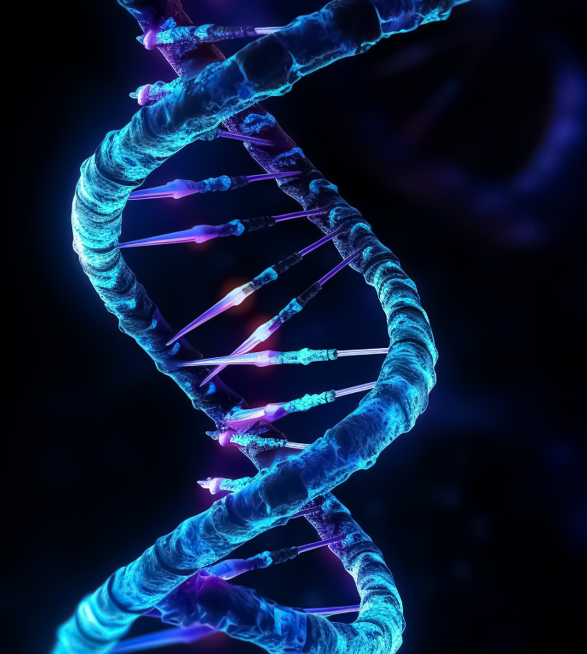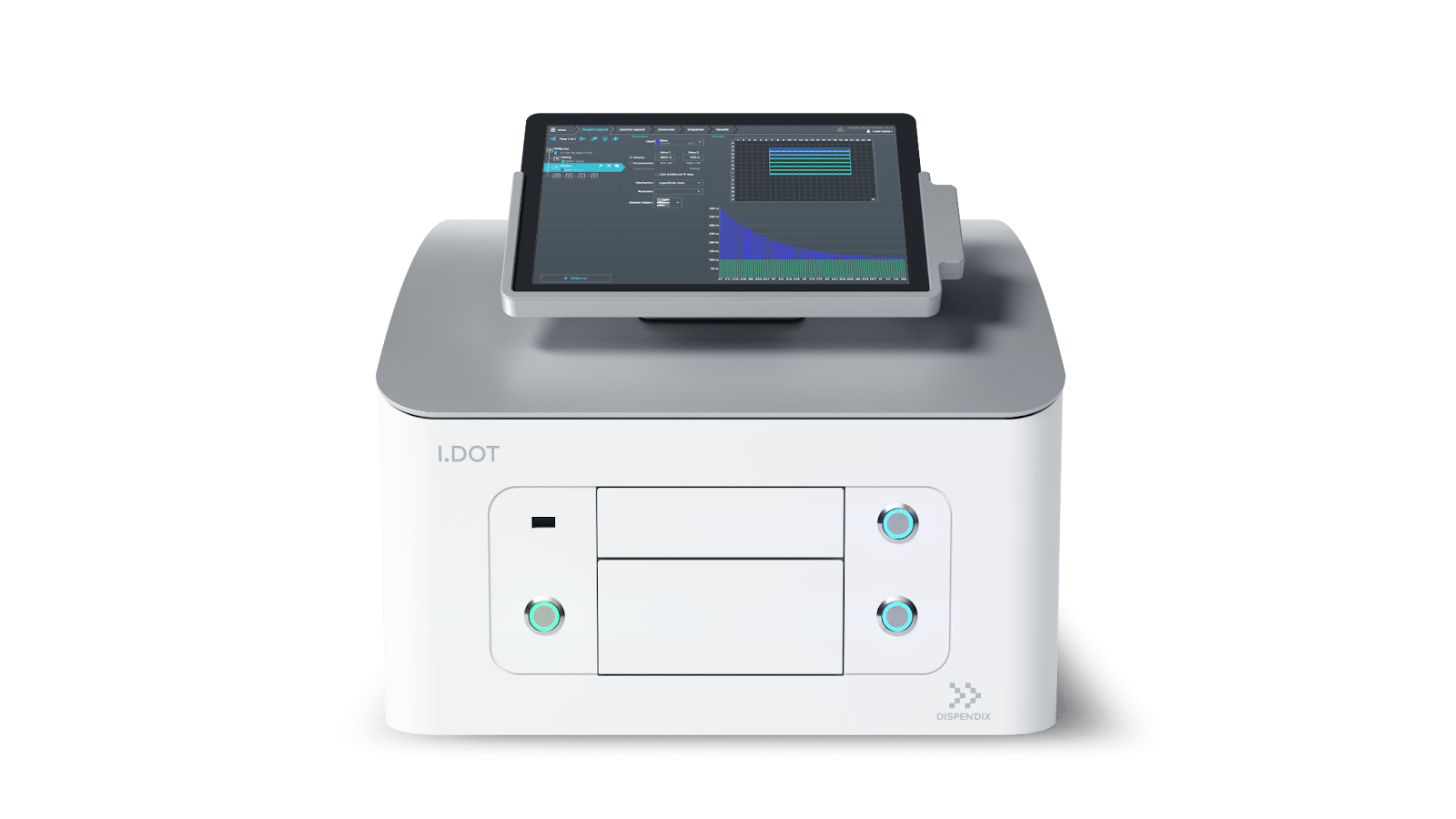Technological advancements have greatly improved the way we conduct biomedical research, with next-generation sequencing (NGS) being a prime example1. However, NGS sample preparation is tedious and error-prone, so we need new technologies to allow it to reach its full potential.
The Promise of NGS: Unleashing the Power of Genomics
Genomics lies at the heart of biology and can tell part of the story about who we are and where we come from. This makes NGS an incredibly powerful tool for understanding ourselves and gaining insights into many diseases that arise due to aberrations at the genome level2. NGS helps us solve the genetic puzzle that defines diseases like cancer and rare inherited disorders (Fig. 1).

Figure 1. NGS allows us to discover the genetic route of different diseases, including cancer, which is caused by mutations within the genome.
The Achilles' Heel: NGS Sample Preparation Errors
Despite its ability to answer some of our most pressing questions, NGS remains a challenging technique. Errors in NGS sample preparation, such as pipetting inconsistencies and sample contamination, lead to untrustworthy results, while mistakes during workflows can lead to significant losses of time and resources3. These errors delay the discovery process and ultimately prolong the suffering of patients.
Here, we explore how the I.DOT Liquid Handler uses a combination of microfluidics and automation to streamline research efforts, removing common sources of error while maintaining sample integrity.
Introducing the I.DOT Liquid Handler: Automation for Next-Level NGS
The I.DOT Liquid Handler has emerged as a powerful tool for optimizing NGS sample preparation and expediting research efforts. Its batch-processing capabilities mean it can support high-throughput NGS experiments and is easily scalable to meet the demands of modern research projects.

The Power of Microfluidics
Microfluidics focuses on the accurate manipulation of very low liquid volumes. This field has revolutionized biological research, which relies on the precise dispensing of degradation-prone substances, such as nucleic acids4. The I.DOT Non-Contact Dispenser's microfluidics capabilities give users significant advantages.
Minimizing Reagent Waste: A Sustainable, Cost-Effective Choice
At DISPENDIX, we take sustainability seriously. That’s why we designed the I.DOT Non-Contact Dispenser for non-contact dispensing volumes as low as 8 nL. This means the need for pipette tips in NGS sample preparation is significantly reduced5. It also makes the device fantastic for minimization, meaning researchers can save money on reagents by downscaling from supplier SOPs.
Maximizing Sample Integrity: Working with Minute Volumes
Generating samples for biological research can be challenging. Patient-derived samples are particularly valuable because they can give direct insights into disease. By working with very low volumes, the I.DOT Non-Contact Dispenser means that more of the sample can be used for other analyses. This capability can be invaluable when performing NGS sample preparation for rare patient-derived samples.
Speed without Compromise
Doing something slowly is often synonymous with doing it right. But with the I.DOT Non-Contact Dispenser, this is thankfully not the case. The device is automated, which means it combines speed with high-quality results, so users benefit from streamlined workflows without compromising quality.
Breaking Free from Manual Pipetting: Increased Efficiency
Manual pipetting is a staple of biomedical research, but as anyone who has manually pipetted a 384-well plate will tell you, it’s time-consuming, prone to human error, and (let’s face it) boring6. Time is a researcher's most valuable resource, and by adopting automation, researchers can increase research efficiency, free up their time, and reduce costs associated with reagents and disposables like pipette tips (Fig. 2).

Figure 2. The I.DOT Liquid Handler allows researchers to use their time more efficiently while ensuring accuracy in liquid handling and NGS sample preparation.
Generating More Data in Less Time: Accelerated Research
Automated systems, like the I.DOT Non-Contact Dispenser, make research go faster. It’s that simple, but it goes beyond being faster than manual pipetting. Automation frees up researchers' time to analyze data quicker and generate new questions, allowing all aspects of the research effort to move faster.
Nurturing Sample Viability
The I.DOT Non-Contact Dispenser lets you get the most out of your samples by using less and ensuring that they are processed appropriately. Prioritizing sample viability in this way minimizes the need to repeat NGS sample preparation and respects patients who may have generously donated samples for research.
Built-in Volume Verification: Protecting Delicate Samples and Recovering Errors
The I.DOT Non-Contact Dispenser's DropDetection technology detects and counts every drop dispensed during a run, ensuring that no samples or reagents go to waste. The device ensures a maximum dead volume of 1 µL, vastly outperforming traditional liquid handlers.
Confidence in Your Results: Minimizing Sample Degradation
Non-contact dispensing is central to the I.DOT Liquid Handler's ability to maintain sample integrity. This feature greatly diminishes the chances of cross-contamination, which is a primary cause of inaccuracy in downstream data analysis7. By requiring lower sample volumes for analysis, you can create more aliquots of your samples for future studies, greatly reducing degradation due to repeated freeze/thaw cycles.
Conclusion
NGS is fundamental for biomedical research efforts. However, errors in NGS sample preparation and human inconsistencies have hindered its potential. The I.DOT Non-Contact Dispenser is a groundbreaking solution for building reliability in NGS workflows. Its automated microfluidics system maximizes sample integrity and reduces waste while accelerating research. Built-in volume verification and non-contact dispensing ensure accurate results and preserve precious samples. Liquid handling automation is a win-win for scientists because it helps to generate more accurate results in a fraction of the time.
Ready to conquer NGS sample preparation with confidence and efficiency? Discover how the I.DOT Liquid Handler empowers your research. Book a demo today!
References
- Dahui Q. Next-generation sequencing and its clinical application. Cancer Biol Med. 2019;16(1):4-10. doi:10.20892/j.issn.2095-3941.2018.0055
- Sherman RM, Salzberg SL. Pan-genomics in the human genome era. Nat Rev Genet. 2020;21(4):243-254. doi:10.1038/s41576-020-0210-7
- Yin Y, Butler C, Zhang Q. Challenges in the application of NGS in the clinical laboratory. Hum Immunol. 2021;82(11):812-819. doi:10.1016/j.humimm.2021.03.011
- Duncombe TA, Tentori AM, Herr AE. Microfluidics: reframing biological enquiry. Nat Rev Mol Cell Biol. 2015;16(9):554-567. doi:10.1038/nrm4041
- Bistulfi G. Reduce, reuse and recycle lab waste. Nature. 2013;502(7470):170-170. doi:10.1038/502170a
- Guan XL, Chang DPS, Mok ZX, Lee B. Assessing variations in manual pipetting: An under-investigated requirement of good laboratory practice. J Mass Spectrom Adv Clin Lab. 2023;30:25-29. doi:10.1016/j.jmsacl.2023.09.001
- Chen H, Wang B, Cai L, et al. A comprehensive performance evaluation, comparison, and integration of computational methods for detecting and estimating cross-contamination of human samples in cancer next-generation sequencing analysis. J Biomed Inform. 2024;152:104625. doi:10.1016/j.jbi.2024.104625